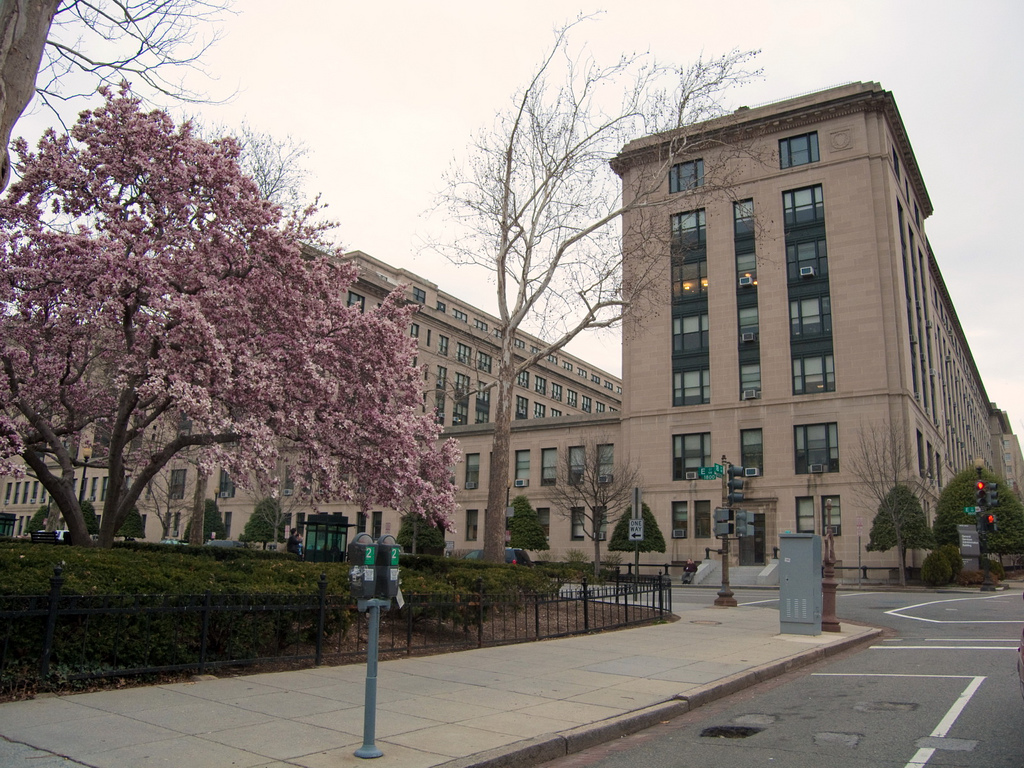In our previous Introduction to GWACs, EZGovOpps noted that the use of GWACs continues to grow, and that IT-related services will continue to earn contracting dollars in the future. Now, the 8(a) STARS II GWAC by GSA appears to have bucked this trend in 2017.
| 8(a) STARS II Obligated Funding and Task Orders (GSA spending data, as of September 19, 2017) | ||||
| 2014 | 2015 | 2016 | 2017 | |
| Obligated Dollars | $1,123,758,297.20 | $1,274,584,197.20 | $1,478,275,155.53 | $908,536,288.22 |
| Task Orders | 668 | 662 | 710 | 276 |

GSA Headquarters (Courtesy of Cliff via Flickr)
As you can tell by the data above, 8(a) STARS II had a steady rise in obligated funding from FY14 to FY16. Similarly, our analysts noted that from 2012 to 2016, 8(a) STARS II was used for an average of 74% of the task orders from all of the GSA GWACs combined. However, FY17 spending data shows a marked decline in the use of this GWAC. With less than half of the total task orders from 2016, and less than $1 billion in obligated spending, FY17 represents a notable decrease in this GWAC use. While there is still time for a “September push” at the end of this fiscal year, with room for more task orders in the last weeks of the month, it is unlikely that 8(a) STARS II will meet last year’s numbers, much less exceed them. Why has there been such a dramatic decrease?
EZGovOpps believes that the main factor contributing to this decline is the change in incumbent contractors as the contracting vehicle entered its 6th year. Awarded in 2011, 8(a) STARS II started with a base period of 5 years, with an option to extend for another 5-year period. This means that in 2016, with the original base period completed, GSA had the option to extend contracts for another 5 years with current contract holders, for performance until 2021.
However, companies who entered into the original contract with GSA may have missed performance requirements for continue. Or, the major factor, is that companies who entered into the 8(a)-only opportunity in 2011 had reached the end of their 8(a) status, and were ineligible to enter into the 5-year option agreement. As Edward Kim of Spry Methods observed during the announcement of their successful entry into the 8(a) STARS II option period: “When the base period for STARS II expired, there were a large number of contract holders who became ineligible to receive an exercise of the option period… Spry is very grateful to be able to continue offering our services and solutions to customers using this STARS II vehicle for another five years.” Contracting data illustrates the huge drop in contractors: When awarded in 2011, 8(a) STARS II had 599 awardees. By October 2016, after the end of the original base period, 8(a) STARS II was down to 310 industry partners.
In 2015, GSA announced an Open Season competition, allowing for contractors to join 8(a) STARS II for the remainder of the time and $10 billion left on the contract. However, this was not awarded until June 2017 to 502 offerors, meaning that for a large portion of FY17, 8(a) STARS II was operating with far fewer contractors than originally awarded. With the Open Season competition complete, 8(a) STARS II currently holds 787 industry partners, which should allow for a much wider and more diverse contractor pool that Federal agencies can work with. This should allow the GWAC a chance to rebound in FY18 and beyond, until it ends in 2021.
Interested in learning more about 8(a) STARS II, or tracking specific procurement initiatives? Seeking a teaming partner or subcontracting opportunities? Sign up for a free trial with EZGovOpps. As the premiere market intelligence platform, EZGovOpps can provide the information needed to follow procurement trends, produce personalized opportunity forecasts, and provide custom analyst-updates for a complete understanding of the Federal contracting market today.
Don’t forget to view our full GovCon News section for more intel.


